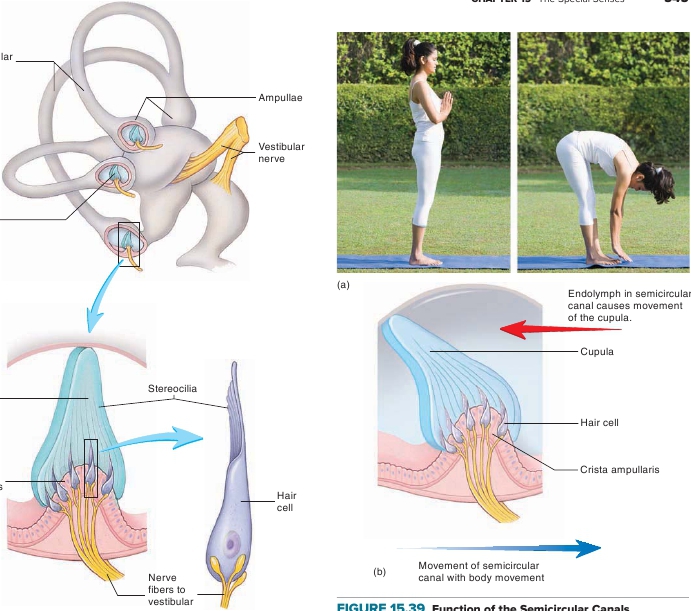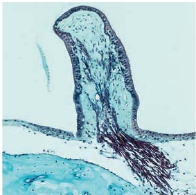545

Semicircularcanals
Cupula
(a)
Cupula
Cristaampullaris
(b)
nerve
(c)
FIGURE 15.39
Function of the Semicircular Canals
The crista ampullaris responds to fluid movements within the semicircularcanals. (
a
) When a person is still, the cupula is stationary, as when a personis standing (see figure 15.38
b
). (
b
) As a person moves (for example, whenthe person bends to touch her toes), the semicircular canals begin to movewith the body (
blue arrow
), but the endolymph tends to remain stationaryrelative to the movement (
red arrow
pointing in opposite direction of bodyand semicircular canal movement), and the cupula is displaced by theendolymph in a direction opposite the direction of movement.

(d)
FIGURE 15.38
Semicircular Canals
(
a
) Semicircular canals, showing the location of the crista ampullaris inthe ampullae. (
b
) Enlargement of the crista ampullaris, showing the cupulaand hair cells. (
c
) Enlargement of a hair cell. (
d
) SEM of a crista ampullariswith hair cells.
Balance is a complex process not simply confined to one typeof input. In addition to vestibular sensory input, the vestibularnucleus receives input from proprioceptive neurons throughout thebody, as well as from the visual system. In sobriety tests, peopleare asked to close their eyes while their balance is evaluated,because alcohol affects the proprioceptive and vestibular compo-nents of balance (cerebellar function) to a greater extent than itdoes the visual portion.Reflex pathways exist between the dynamic part of the ves-tibular system and the nuclei controlling the extrinsic eye muscles